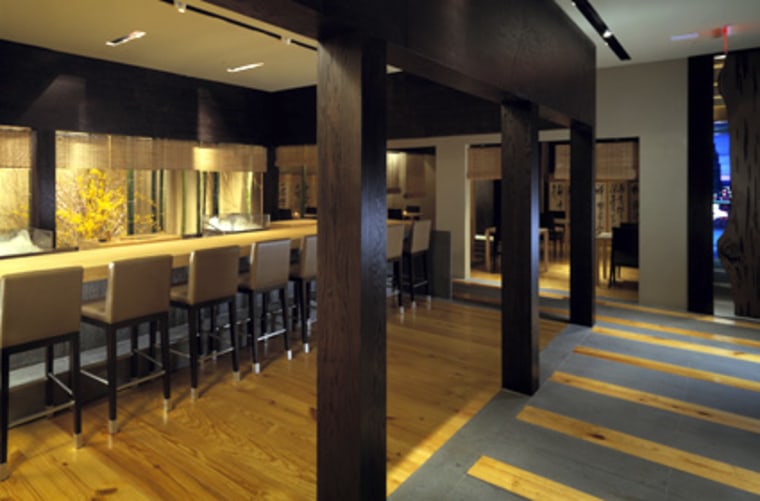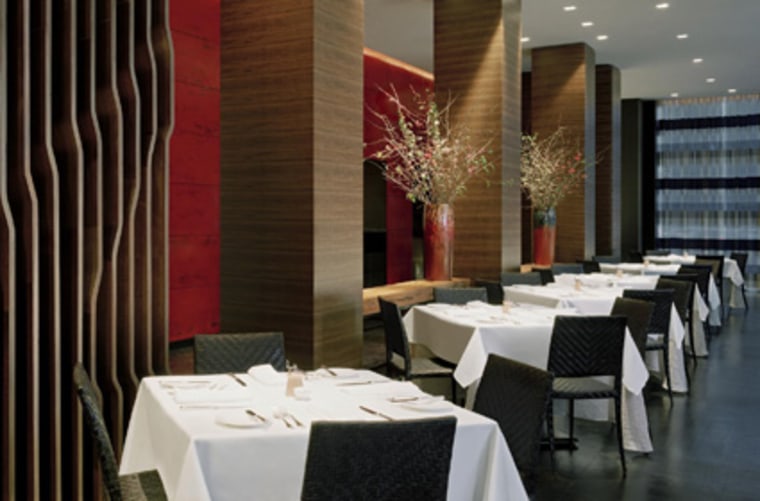One of the oddities of the current economic meltdown is how American restaurateurs have had to get feistier, more streamlined, and far more creative, which means that there has never been a better time to dine out around the U.S. than right now. Haute cuisine establishments are not so much failing as they are holding their own, but very, very few new expensive restaurants are opening around the country, and in resort areas especially, like Las Vegas, there has been a lot of rethinking about big splashy restaurants of any kind.
The traditionally strong restaurant cities abide—New York, New Orleans, Los Angeles, Chicago, and San Francisco. But in the past decade other cities came way up in reputation, so that now you can dine amazingly well in just about any city of any size. O.K., maybe not Buffalo, Detroit, and Mobile, but most certainly there is an amazing number of good restaurants in cities as small as Greenville, S.C., Naples, Fla., and Louisville, Ken.
So many cities in the U.S. now have the kind of gastronomic diversity and regionality rich in every department that, even if you’ve visited in the last few years, you can be sure that next time you go, there’ll be more new and enticing restaurants than you can possibly eat in.
If only in numbers New York still has the muscle for bragging rights, with more than 23,000 restaurants (most of them run-of-the-mill). More important, NYC attracts a vast number of national and international visitors—35 million last year—who come with plenty of money and the intention of spending it at the city’s best-known restaurants, from grand French dining rooms like Daniel and Le Bernardin to notoriously out-of-the-way steakhouses like Peter Luger’s. And it is still the only city in America where lunch is taken seriously and can still be a two-hour affair. Indeed, The Four Seasons, opened in 1959, was where the term “power lunch” was coined. It is also worth noting that the first U.S. city that France’s Michelin published a red guide on was the Big Apple.
By breaking through the formality of dining out—most evident at Wolfgang Puck’s pizzeria-and-grill Spago—Los Angeles restaurants owned the 1980s, and its California cuisine and casual chic had a tremendous effect on the way Americans, and later the world, would eat. As Michael McCarty, owner of the ground-breaking Franco-Southern Cal restaurant Michael’s in Santa Monica, says, “California cuisine wasn’t really about mini-vegetables and baby lamb; it was about style.”
But the fads and razzle dazzle of the 1990s in L.A. have largely fizzled, so that the city has lost a good deal of its luster in the last decade, with few innovative restaurants opening in the last five years.
But America’s great foodie town is San Francisco, where, since its Barbary Coast days, Asian immigrants came to cook, bringing the west coast a tantalizing and diverse Eastern food culture. Over in Berkeley, a former Montessori teacher named Alice Waters revolutionized American cooking by asking why the ingredients chefs weren’t as good as they used in Europe, and Chez Panisse was born from that simple idea. Still, the Provencal-Mediterranean style Chez Panisse exemplified became the culinary style of San Francisco, which it is to this day, but its ethnic enclaves had made the city rich in Japanese, Chinese, Thai, and Vietnamese food culture.

You’d think that Chicago’s Midwestern swagger would make it a meat- and-potatoes town, but as America’s most majestic, wide-open, best designed city, it is also central to American gastronomy, from innovations like the salad bar at R.J. Grunt’s to some of the best Mexican food in the U.S., at Topolobampo and Frontera Grill. It’s a lot more fun to eat out in Chi-town than almost anywhere else.
Chicago has also become the capital of so-called “molecular cuisine”—that hyper-creative cooking style that manipulates ingredients into stunning but often eerie concoctions in imitation of Spain’s El Bulli. Yet despite media hype, there are only three small restaurants in Chicago doing this sort of thing—Alinea, Schwa, and Moto.
Hurricane Katrina wreaked enormous havoc on New Orleans’ restaurants, not so much by washing them away as by destroying their electricity and refrigeration for weeks and by displacing their kitchen and service staffs far beyond the city limits. As Tom Fitzmorris in his "New Orleans Menu" newsletter has chronicled, the city is back to having about as many restaurants now open—close to 900—as when Katrina hit. That so many have re-opened is as much a testament to the people’s spirit as to their belief that good food gives you strength and calms the soul so that they can, again, let the good times roll.
Ten years ago Las Vegas would hardly rank among the top 30 cities in the U.S. for good food. But an explosion (in some cases implosion) of casinos in the late 1990s brought Sin City a whole new form of decadence in dauntingly expensive celebrity restaurants culled from other cities. Wolfgang Puck opened a Spago and other restaurants there, Emeril Lagasse a fish house, Todd English an Olives, and French restaurateurs Guy Savoy and Joël Robuchon opened namesake restaurants there charging the highest prices in all American dining. Steve Wynn changed the dynamic with city-based, original restaurants at his Wynn Las Vegas and his newer Wynn Encore, where the chefs whose name is on the door, as at the very posh Alex and the extraordinary Italian ristorante Bartolotta, are the chefs actually doing the cooking for you.
It’s getting hard not to have a great meal anywhere in the U.S.
